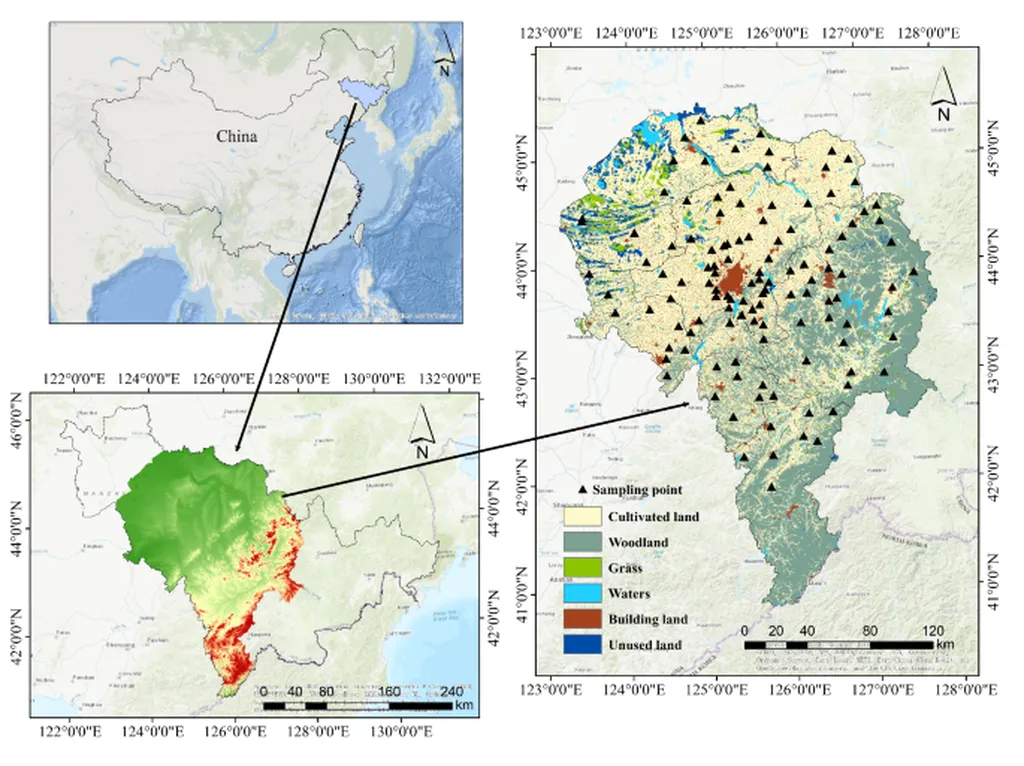In the vast landscape of agricultural technology, a groundbreaking study led by Yucheng Gao from the State Key Laboratory of Soil and Sustainable Agriculture at the Chinese Academy of Sciences is shedding new light on how the angle of observation can significantly impact the accuracy of soil property retrieval using hyperspectral imaging. Published in the journal *Remote Sensing* (translated from Chinese as 遥感), this research delves into the intricate world of soil organic matter (SOM) and particle size distribution (PSD), offering insights that could revolutionize precision agriculture and the energy sector.
Hyperspectral technology, which captures images across numerous narrow spectral bands, has long been a staple in soil analysis. However, most studies have focused on data collected from directly above the soil surface, or the nadir direction. Gao’s research challenges this norm by exploring how different viewing angles affect the retrieval of crucial soil properties.
“The influence of viewing geometry on hyperspectral-based soil property retrieval has been largely overlooked,” Gao explains. “Our study systematically analyzes how varying angles can enhance the accuracy of soil property retrieval, which is pivotal for precision agriculture and beyond.”
The research team collected bidirectional reflectance factors (BRFs) at 48 different viewing angles for 154 soil samples with diverse SOM contents and PSDs. They then employed a combination of ten spectral preprocessing methods, one sensitive wavelength selection method, and three retrieval algorithms to analyze the data. The findings revealed that soil BRFs are influenced by both soil properties and viewing angles, but the viewing geometry had limited effects on the choice of preprocessing method and retrieval algorithm.
Among the preprocessing methods, the first derivative (D1), Savitzky–Golay filter combined with the first derivative (SG + D1), and Savitzky–Golay filter combined with the second derivative (SG + D2) outperformed the others. Partial least squares regression (PLSR) achieved higher accuracy than support vector machine (SVM) and convolutional neural networks (CNNs) when retrieving soil properties.
One of the most significant findings was that multi-angle BRFs significantly improved retrieval performance compared to single-angle data. For SOM, the coefficient of determination (R²) increased by 11%, and the root mean square error (RMSE) decreased by 16%. For PSD, R² increased by 15%, and RMSE decreased by 30%. The optimal viewing zenith angle ranged from 10° to 20° for SOM and around 40° for PSD. Additionally, backward viewing directions were more favorable than forward directions, with the optimal viewing azimuth angles being 0° for SOM and 90° for PSD.
“This research opens up new possibilities for improving the accuracy of soil property retrieval using multi-angle hyperspectral observations,” says Gao. “By understanding the influence of viewing geometry, we can optimize data collection strategies and enhance the precision of soil analysis.”
The implications of this research extend beyond agriculture. In the energy sector, accurate soil property retrieval is crucial for tasks such as site selection for bioenergy crops, assessing soil health for sustainable energy production, and monitoring soil carbon sequestration. By leveraging multi-angle hyperspectral observations, energy companies can make more informed decisions, leading to improved efficiency and sustainability.
As the agricultural and energy sectors continue to evolve, the insights provided by Gao’s research will undoubtedly shape future developments in soil analysis and precision agriculture. By embracing the complexities of viewing geometry, we can unlock new potential for enhancing soil health and optimizing resource management.
In the words of Yucheng Gao, “The future of soil analysis lies in our ability to harness the full potential of hyperspectral technology, and understanding the influence of viewing geometry is a crucial step in that journey.”

